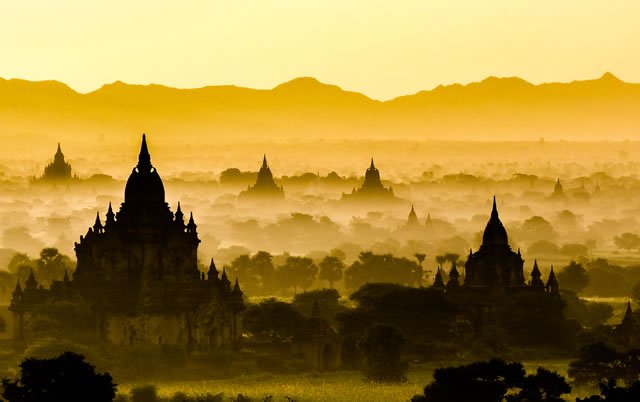The Shwezigon (or Shwezigon Paya) is a 11th century pagoda and one of Bagan’s top destinations. Sitting on the top of the three terraces there is a beautiful bell shape structure (or stupa) which became a model to be followed in the later religious structures in Myanmar.

“Shwezigon” by DIMMIS – Own work. Licensed under CC BY-SA 3.0 via Commons.
One of the most apparent characteristic of this pagoda is its golden color, result of more than 30,000 copper plates covering it. This feature was not in the original construction, it was made later (from 1983 to 1984) after a huge collective donation made by national and international visitors of the Shwezigon Paya.
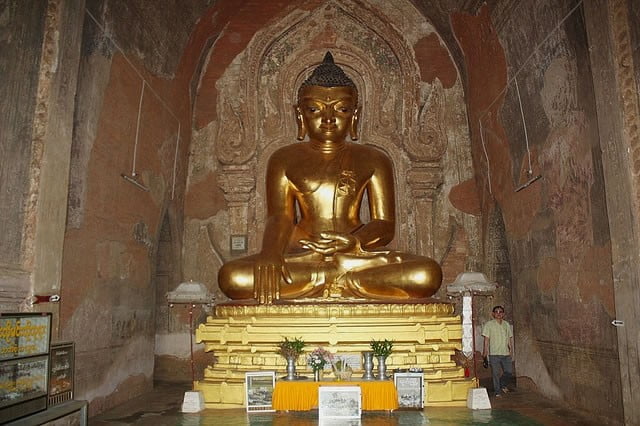
Credit: dany13 – Flickr
Shwezigon Pagoda is surrounded by an outer wall and other shrines, temples and many other religious structures inside it.
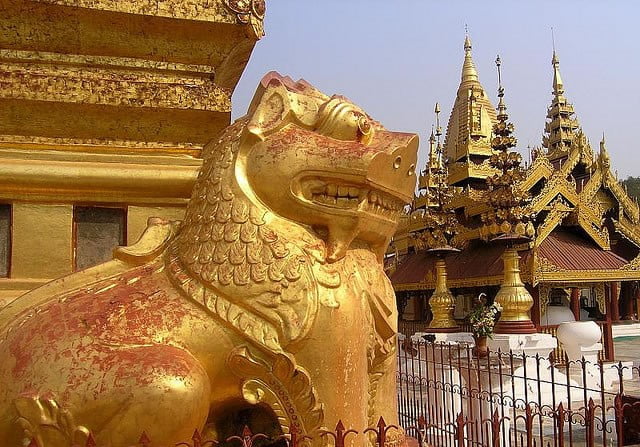
Credit: Roaming the Planet – Flickr
At the entrance, surrounding the pagoda there are huge statues of the Shwezigon guardians, known as chinthes which are lion-like creatures, often seen at the entrances of temples in Asia. Around the stupa, on the three terraces, are the inscriptions of the Jataka Tales on 550 glazed terra-cotta tiles.
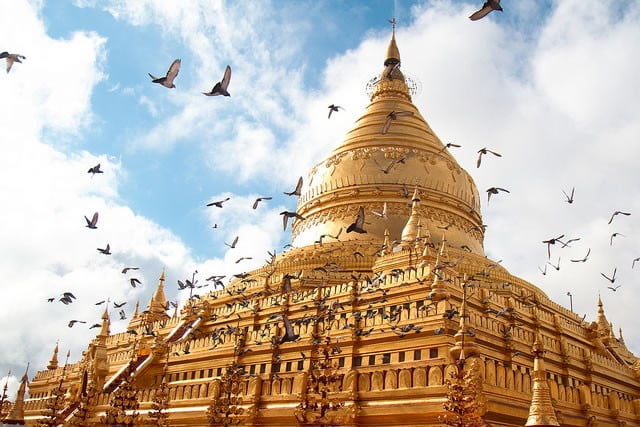
Credit: Stefan Munder – Flickr
Shwezigon Pagoda’s story says that the King Anawrahta initiated the temple’s construction by sending a white elephant roam freely and wherever the elephant stopped would be the chosen site to build the pagoda. It happens that the king Anawrahta could not see the completion of the temple as he died before killed by a buffalo.
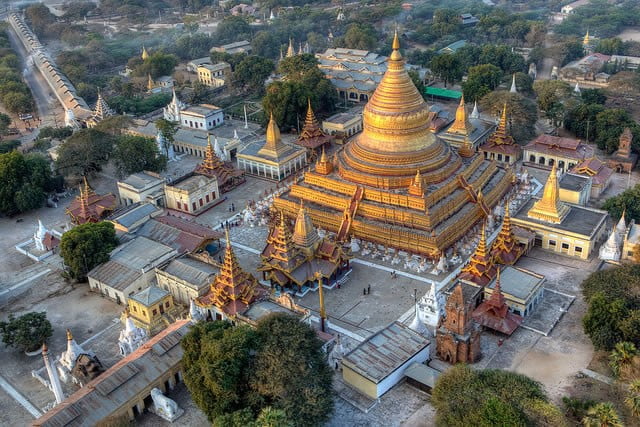
Credit: Timothy Neesam – Flickr
King Anawrahta is credited for the first three terraces of the temple before his death. The rest of Shwezigon Pagoda is attributed to his son, and probably the most famous and loved of the rulers in Bagan, King Kyanzittha, also known as the greatest builder. It was during his reign that Bagan saw a huge increase in the numbers of temples constructed.
Shwezigon Pagoda Map and Location
About 5 kilometers North East of Old Bagan, on the edge of Nyaung U village, close to the Irrawaddy river.

